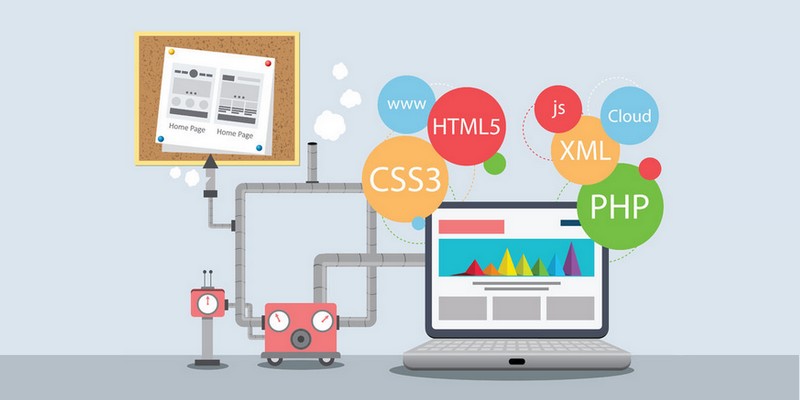WordPress is a software that needs no introduction or presentation. By the time, you have come to this blog, you must have heard about the WordPress, its community and what it is used for. To give our readers a quick recap, WordPress is an online tool for making websites and blogging forums.
Since its development, it has evolved so much that over many times, WordPress undisputedly came out as the favorite platform for developers and bloggers to work with.
With its growth and unprecedented success, WordPress has seen some of the best web designs and sites on its own platform that are now a part of the online world. This is a software which takes its charm by virtue of its flexibility, the ability to be customized and also how adaptable it can be for developers. There is nothing that cannot be done on the WordPress software.
Such growth and charming traits are not just the results of a few years. WordPress is a constant contribution of so many different programmers and developers over the period of time. These programmers often contribute a lot of different innovations in the software through patches and this is one of the biggest ingredients of the WordPress success.
Another important highlight of this software is the use of customized codes and themes. WordPress themes are like the sketches or underground layouts for any website which is to be developed. Themes provide a certain flavor and attributes to the website related to the category it belongs to. For example, if the website is for a restaurant, a good WordPress theme will provide similar flavors and feelings to it.
This is the magic of WordPress, which is only possible with this software. Now, this was the very basic rundown of WordPress and themes. Since it can be customized to all the possibilities, WordPress themes can play an even better or bigger role in the website development. Today’s blog is going to help consumers, users and also programmers to understand the use of WordPress themes and talk about various points through which developers can optimize their themes to even a great positive impact on the website. Here are five tips to optimize your WordPress theme.
Limiting The Excerpt’s Word Count
This is usually the problem with websites that will have a lot of posts or add-ons. Excerpt’s count in WordPress creates a lot of manual work for developers as they have to go through each of the posts which will be added to the website and then customize the code accordingly. However, when developers use the idea of limiting the Excerpt’s word count, they often can limit their work by a filter hook which automatically reduces their manual work and modifies the data automatically before it is saved in the database and posted on the website.
This tool while working on themes for magazines and social media is an important element of the WordPress that many beginners or intermediate developers are not completely aware of. However, once perfected, this command can really help developers to work on automated coding for database management. You can use the link or command or tag by the name “more” and then utilize the idea of the excerpt’s word count. For example, if you add “more” to the magazine website, then you can automatically filter down the posts.
Adding A Favicon Hook To The Theme
Imagine the scenario where you have worked on the entire theme of the website and suddenly you feel the need to change a certain element of it. Now you will have to go back to step 1 to make the required changes and then finalize everything once again. However, if you add a favicon to your WordPress theme, you can save yourself from a lot of trouble. This is because favicon hooks can play the role of checkpoints in the WordPress theme. When you add a favicon hook, you can go back to it and only change from the element where the hook was placed rather than the whole system and theme. So always focus on using the hook system for your complicated WordPress themes and website.
Detecting The Browsers IOS and Safari
Today’s modern websites are device friendly. This means that whether you are accessing the website on a mobile, a tablet, a television or a different browser, the website will work in the same manner and with the same performance. If a certain website fails to come up to this benchmark, then this means that your website is not up to the modern day standards and must be revised.

While working on WordPress, developers can easily check the performance of the website on multiple browsers and settings through a command. They can also program it to consider certain browser settings, even when accessing through a completely different browser. This is again the great virtue of customization that WordPress developers get while working on the websites. It is an important check that most developers undermine and go ahead with the final development phase. When the website doesn’t perform on specific settings, then they have to come back and work on this part of their theme. Detection settings can be achieved by using the following commands:
add_action('wp_print_styles', 'ilc_enqueue_styles');
function ilc_enqueue_styles(){
global $is_iphone;
if( $is_iphone ){
wp_enqueue_style('iphone-css', get_stylesheet_directory_uri() . '/iphone.css' );
}
else{
wp_enqueue_style('common-css', get_stylesheet_directory_uri() . '/common.css' );
}
}Customize Themes To Your Own Liking
Within the WordPress technology, there are three ways of using the advantage of WordPress themes. One simple way is to go to the website and buy a relevant WordPress theme with the default settings and apply it to your website. The second way of working with the WordPress theme is to use a free available version of any relevant theme and let the WordPress software do its own job by applying all the right filters and content along with the extensions on your developing website.
Finally, what most advanced developers do is to create their own customized theme and then re-work on its engine. Here you can do a lot of different things like adding more plug-ins, change the shape and design of the theme to make it more relevant, play with headers and colors as well as work on the coding to get more impact of the theme on your website. Themes can be customized by using various shortcodes, for example:
<?php echo do_shortcode("[example_shortcode]"); ?>Showing Content To Logged In Users
There are a lot of different websites that work with the idea of content management and subscribed users. This means these websites only provide a limited access to people who are unsubscribed and full access to subscribed users. Here, WordPress themes could be optimized by running several coding commands and instructing WordPress to show content only to the logged in users. This is again a very advanced form of theme and coding integration that professional and advanced developers are more comfortable with.
This idea of theme customization is highly relevant to the websites selling paid subscriptions or wanting the database of their online users and instructing them to make online accounts. This side of customization is not recommended for people working on open information and entertainment websites and is only applicable to content sensitive websites. The command:
add_shortcode( 'feedonly', 'ilc_feedonly' );
function ilc_feedonly( $atts, $content = null ) {
if( is_feed() ) return '<p>' . $content . '</p>';
else return;
}Can help you manage this setting in your WordPress themes.


Thankyou! for such a great piece of information.